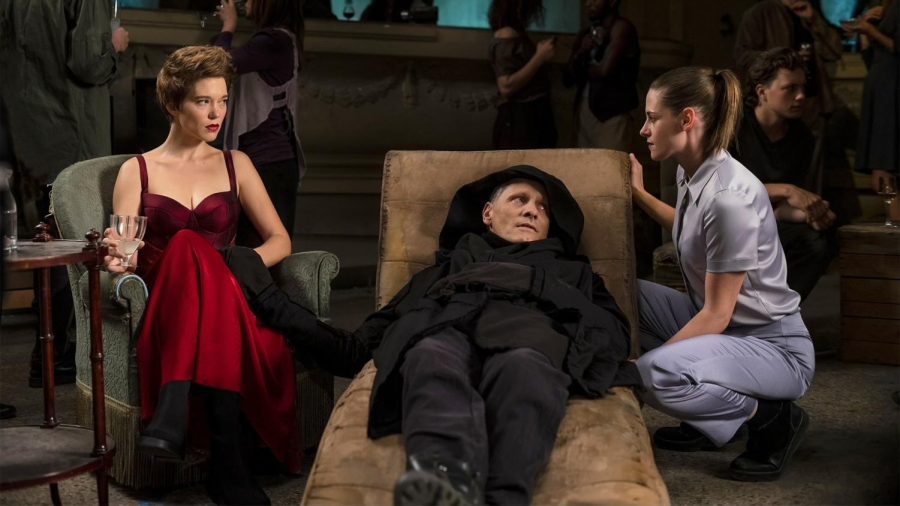‘Crimes of the Future’ marks return of Cronenberg’s body horror brilliance
June 5, 2022
From the mind of David Cronenberg, body horror thriller “Crimes of the Future” mainly focuses on central characters Saul (Viggo Mortensen) and Caprice (Léa Seydoux) in an alternate reality where civilization has eliminated pain because of technological advancement. This results in a society that believes pain is pleasure and surgery is the new sex.
Worldbuilding marks one of the movie’s major strong points, taking a concept as simple as a high-tech world without pain and creating so many details that make this established concept feel fully imagined. This includes art shows in which onlookers witness the surgery of people, engineers attempting to create a hybrid human that can eat plastic to solve the world’s pollution issue and people putting zippers on their stomach so others can see their insides with ease. The dark worldbuilding portrays loss of pain in society as a gateway to desiring actions that once caused discomfort, such as surgery or self-inflicted facial scars. Aside from connections to pain and sexual desire, the technology in this movie proves incredibly futuristic. Otherworldly gadgets include a human-controlled pod that conducts surgeries and a fleshy chair where people can sit down to eat.
The story of “Crimes of the Future” can be best described as one central narrative surrounded by several smaller, connected narratives. As previously mentioned, audiences follow Saul and his artistic partner Caprice. Saul has the ability to grow additional organs that have never been seen before. He and Caprice utilize this skill to create surgical shows and make money from people who enjoy watching these organs be removed. This leads to multiple story lines such as a beauty pageant about the inside of the body, a group of antagonistic plastic eaters genetically creating humans that can only live off of consuming plastic and even a budding romance between Saul and Caprice. At one point, Saul and Caprice hop on the surgical pod together nude and let the machine cut them up. It’s an oddly sensual scene for audiences to watch, but it drives home the narrative that surgery is sex and pain is pleasure.
While the film leaves a lot of room for interpretation, the story becomes convoluted and tiresome at some points due to many branching story lines and scenes. For example, a series of scenes in which Saul works undercover for a detective goes nowhere and feels thrown in only to pad out the run time. What ends up materializing on the screen is a network of story lines that are mostly intriguing, but with some that seem rough and borderline exhausting to watch. Luckily, by the end of the movie, every story feels complete and logical despite some story lines struggling to remain clear on the journey to the end. Even considering this fault, each story line remains ultimately entertaining and satisfying.
David Cronenberg’s “Crimes of the Future” offers a unique watching experience. Audiences may find the film’s worldbuilding phenomenal even in the few moments when the story falls flat. There are other good elements for audiences to latch onto as well, including a grandiose, orchestral score and stellar acting. Overall, “Crimes of the Future” makes for a good theater experience, and if audiences enjoy movies that make them ponder society with loads of Cronenberg body horror, this will be the perfect choice for a weekend outing.
4 flesh chairs out of 5











